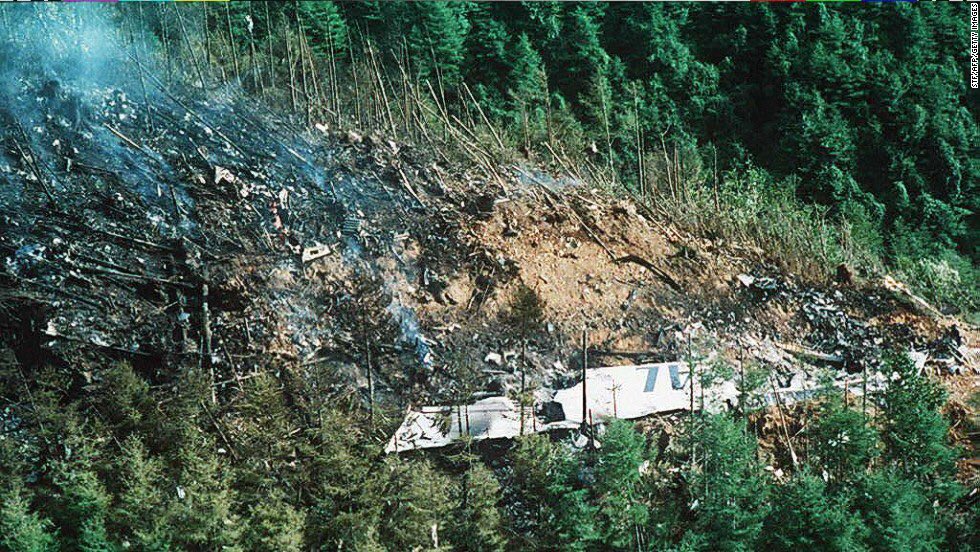On August 12, Japan commemorated the 37th anniversary of the crash of Japan Airlines (JAL) Flight 123 at Mount Osutakayama, where remnants of the world’s deadliest single-aircraft disaster are still being discovered.
On the evening of August 12, 1985, Japan Airlines Flight 123 took off from Tokyo Haneda Airport and was due to land in Osaka an hour later. The aircraft, a JA8119-registered 11-year-old Boeing 747SR, was used for high-density domestic operations.
Seats on the Boeing 747 were completely sold out because it was a Japanese holiday that night, and many people were returning home or going on vacation. The pilot made the first emergency call when the plane was flying as high as 7,300 meters above Tokyo.

Initially, the announcement stated that there had been a loss of altitude information and that the aircraft was facing difficulty controlling itself. The aircraft then descended 3,000 meters. The pilot kept making emergency calls and requesting a detour to Tokyo airport.
For an emergency landing, the pilots were given radar vectors to follow. However, the lack of hydraulics and a vertical stabilizer rendered the aircraft largely uncontrollable.
In a desperate attempt to regain control and stabilize the aircraft, the flight crew used strategies like asymmetric thrust.
The landing gear was lowered, and the flaps were extended to get ready for an approach, but this further tipped the balance, causing the plane to nose dive and bank to the right.
At 18:56 local time, the aircraft, now banking 40 degrees, collided with some trees on the mountainside. Then, just a few seconds later, the right wing clipped a ridge, shattering the aircraft into pieces.
Rescue Efforts
The disaster killed 520 people and left only four survivors. It is also known as the deadliest single-plane crash in aviation history.
The nearby US Air Force was instructed to cease its rescue efforts and hand the task over to the Japanese search and rescue, who couldn’t arrive at the crash site until the following day due to its remote location.
The accident site was remote and dangerous, making rescue efforts complicated. The arrival of emergency rescue crews at the scene took 14 hours after the accident. Some rescuers even walked to remote areas.
The next day, when the bodies of the passengers were discovered, it was noticed that more had survived the accident but tragically perished later from shock.
The pilots struggled valiantly and managed to keep the aircraft flying for 32 minutes despite having no directional control. Rescuers discovered farewell notes and messages among the wreckage from passengers onboard who had acknowledged their fate.

The four people who survived were Hiroki Yoshizaki and Mikiko Yoshizaki, a mother and daughter duo, Yumi Ochiai (26), and a flight attendant who was not on duty at the time of the accident, and Keiko Kawakami (12).
The four were seated in a row to the left of the plane’s back which was still intact.
Keiko, however, was discovered buried in the plane’s debris. As the plane slammed into the mountain, he was pushed from his chair and fell into the bushes. But that event had a profound impact on him. He lost his parents and younger sister in the accident.
1978 Incident
In June 1978, just over seven years before the crash, JA8119 experienced a tailstrike while making a landing at Itami Airport. It made the aircraft unusable while it underwent repairs due to damage to the rear of the fuselage and the rear pressure bulkhead.
However, it was later discovered that these repairs had been made incorrectly, leading to the development of fatigue cracks in the rear bulkhead.

Following the repair, the aircraft continued to fly for several years. However, the defected bulkhead could no longer endure the pressure changes felt during the flight due to the cracks.
On August 12, 1985, JAL Flight 123 was climbing through 23,900 feet, ultimately leading to the component failing.
The jet’s auxiliary power unit (APU) and a five-meter tail section were torn loose from the aircraft due to the bulkhead’s failure, resulting in decompression. The plane was largely uncontrollable due to the severed hydraulic lines.
Remains Still Being Discovered
Nevertheless, the plane’s remains can still be found at the scene. The accident of Japan Airlines Flight 123 has recently made headlines because plane debris from the disaster is still being unearthed 37 years later.
On Mount Osutaka in Japan’s Gunma Prefecture, an oxygen mask that is thought to have been part of the crashed Japan Airlines Flight 123 has recently been discovered. The mask was found while road repairs close to the crash site just one week before the 37th anniversary of the tragic accident.
This finding comes almost a year after a JAL employee found an engine component nearby.
The airline claimed that both pieces of flight 123 were probably unearthed during landslides by typhoon Hagibis in 2019. JAL will add these items to the Safety Promotion Center, which will constantly remind the airline’s dedication to a safer and more promising future.
- Contact the author at ashishmichel@gmail.com
- Follow EurAsian Times on Google News




